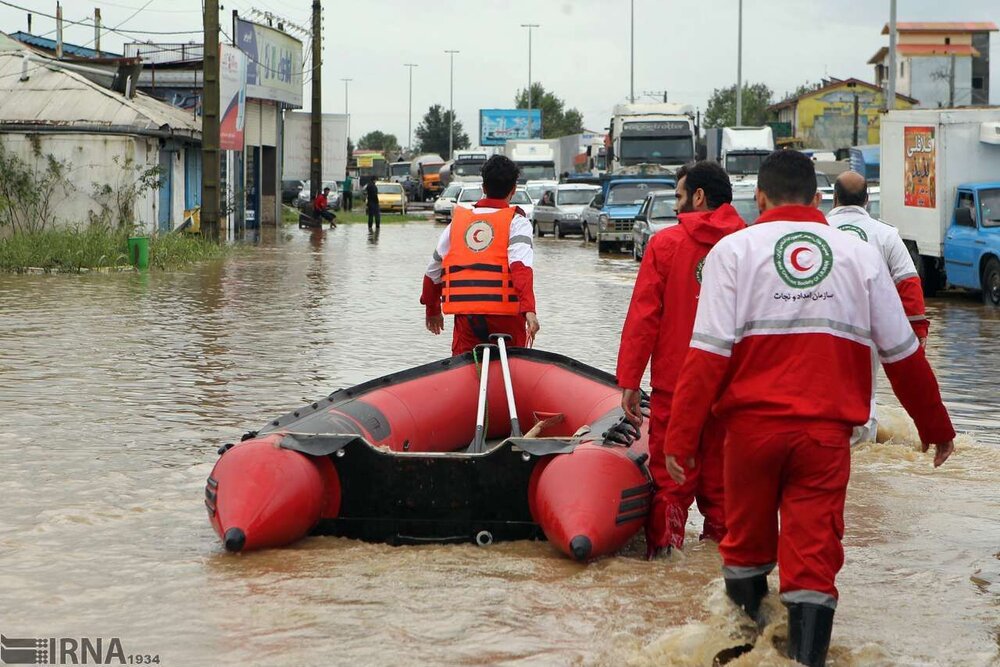Flood hits 17 provinces across Iran

TEHRAN – Flood has stricken at least 17 provinces across the country over the past nine days, IRNA news agency reported on Saturday.
During this period, 17 provinces of East Azarbaijan, West Azarbaijan, Ardebil, Isfahan, Tehran, South Khorasan, Khorasan Razavi, North Khorasan, Semnan, Sistan-Baluchestan, Khuzestan, Kerman, Kohgiluyeh and Boyer-Ahmad, Golestan, Gilan, Mazandaran, and Yazd were inundated.
The Iranian Red Crescent Society aid workers provided relief and rescue services in 110 cities, villages, nomadic areas, and 20 flood-affected areas, Mehdi Valipour, head of the IRCS Relief and Rescue Organization, said.
“Relief and rescue forces worked tirelessly to help 2,562 flood victims, in addition to providing emergency accommodation to 325 flood victims, and relocated 191 to safe areas,” he stated.
"Over the past nine days, 10 people (6 in Kerman and 4 in Yazd) lost their lives," he regretted.
Precipitation in Iran amounted to 127.8 millimeters from the beginning of the current water year (September 22, 2020) until April 24, which demonstrates a 54 percent decline compared to the same period last [Iranian calendar] year.
In comparison with the long-term average (52 years), rainfall dropped by 41 percent over the aforementioned period, according to the data released by the Ministry of Energy.
Over the last two years, Iran was doused with rain which was unprecedented during the past 50 years, but last year, unfortunately, the country faced drought, which shows a 40 percent decrease in rainfall, he explained.
Watershed management is a solution to strengthen the ecosystem in the face of subsequent droughts by penetrating rainfall into the ground.
Wet spell or still short of rain?
Rainfall extremes over the past three years slowly questioned the conception that Iran is experiencing a long-term drought and some of the experts announced that a wet spell will embrace the country.
So, some experts claimed that Iran has entered a period of a wet spell after experiencing dry spells over the past few decades, some others highly rejected the claim implying that the country faced a lack of rain by 50mm over the past 5 decades.
Climate disruption or global climate disruption, is the new term scientists are using to explain the extreme fluctuations that can and will occur to our weather systems as anthropogenic-caused carbon dioxide and other greenhouse gases increase in our atmosphere, the oceans get warmer, and weather events go wild.
The report regrets that climate disruption will be continuing as climate change is on the rise and it calls on taking proper and effective measures to alleviate the adverse effects of climate change on the country.
In fact, experiencing two or three consecutive years of rainy days cannot ensure that drought no longer hits the country, but then it may enter a multi-year drought.
FB/MG
Leave a Comment